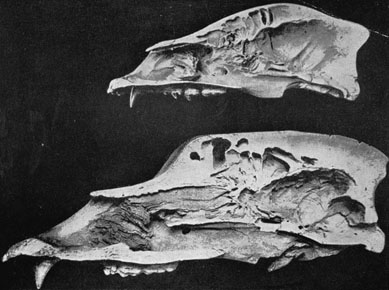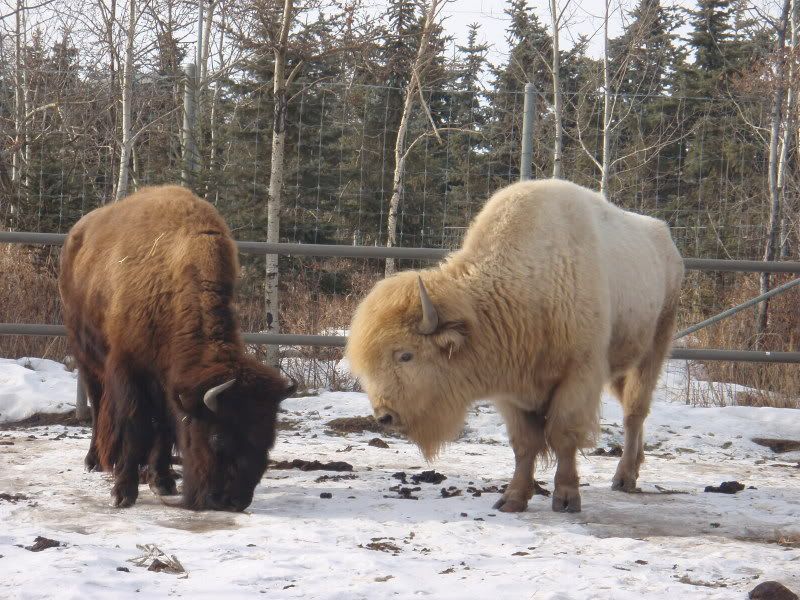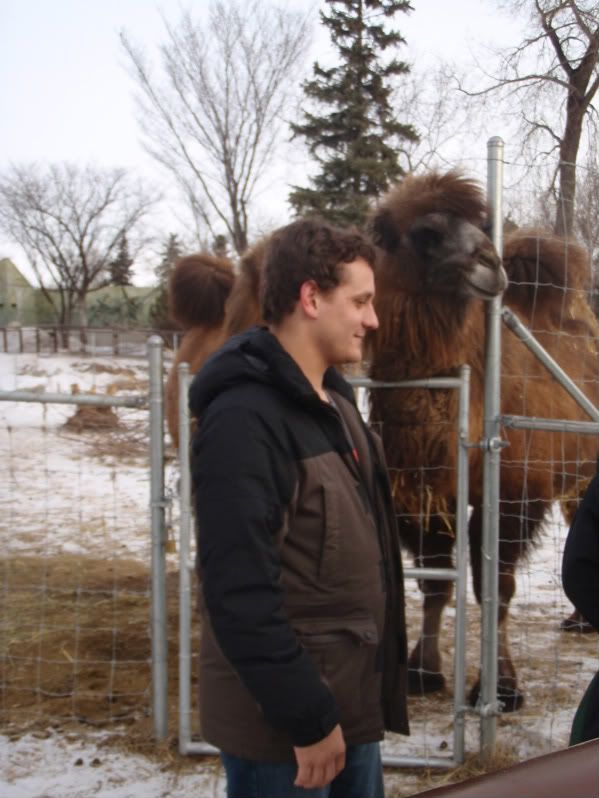Bears have mellowed the fuck out. Re: Cave bears. Mind you, it's not alot but it still kinda counts.
Skulls were much more impressive in the cave bear in terms of robusticity and large canines, however:
Top skull is a brown bear, bottom is a cave bear. While the cave bear whose skull this is was much bigger then the brown bear, the brain cases are very similar in size. Not sure if this means anything, however.
Physical build:
Apparently cave and kodiak bears were similar. I'd have to do some more research and digging to try and find some actual measurements (unfortunately I don't have anything great on cave bears). I do believe most brown bears were more adapted for running, however, which suggests that cave bears may have been more robust then the specimens within populations of smaller (weight) brown bears.
Modern brown bears-especially the dominant males (like the first I showed) are exceptionally powerfully built with almost excessive looking muscle mass; they are almost certainly in very high percentiles even for cave bears, though I'd need to find some actual data to compare, which like I said I'm lacking for cave bears (and I'm posting more then enough random charts here anyways).
Sun bear (Ursus malayanus/Helarctos malayanus, depending on the source) brain:
The sun bear is the outlier within the above chart (as stated by the article, along with specifically that other bears do not have exceptionally large brains).
More brain size information (please note: sun bears are very small by bear standards; not much over 100 lbs):


That is 345 ccs for the sun bear.
Compared to some relatively close relatives:
"Gorilla----Male------535---------------------420-752
Gorilla----Female---458--------------------340-595
Chimp----Male-------396--------------------322-500
Chimp--female------355---------------------275-455
Orang----male-------424---------------------320-540
Orang----female----366---------------------276-494
Gibbon---male-------104---------------------89-125
Gibbon---female----101---------------------82-116"
From
The Natural History of the Gorilla.
Chart showing endocranial volume and estimated body weight of various animals (extant and extinct):
Some primate encephalization quotients:
Excerpt showing relative size of neocortex to the rest of the brain of some relatives:
To bad sun bears are almost extinct and that we know next to nothing about them; they have very large brains for their small body size suggesting that they are probably exceptionally intelligent. When it comes to bears, in the sun bear they certainly haven't mellowed out in regards to brain power.
Want more random charts?
Sure thing!
Estimated bite force of various animals (absolute and relative to size):
In bite force quotient, the sun bear is very far ahead, but the brown bear is relatively mediocre. Not sure how the cave bear would place. Arguably, due to it's much bigger size (and thus greater absolute bite force), one could still give it the win over the sun bear...
Chart on bear bites:
Of all the bear species, the giant panda is number 1 in terms of absolute bite force according to this chart, despite being far smaller then the polar bear.
I don't know much about dinosaurs, but I see that it states it was the largest discovered in the southern hemisphere. I just skimmed it, but does it state something explicitly that suggests it was larger then the Utah raptor?
the specific biomechanics is something that is exceptionally shifty to begin with.
Yes, especially in regards to such things as muscle attachments (leverage particularly, although size of muscle mass may be important as well).
There are so many parameters that you simply can't know, not to mention the fact that it's a menial and useless calculation to begin with.
Hmm?
Excuse me? Tyrannosaurids are COMPLETELY different. Unless you mean they are both theropods, in which case you're basically comparing two groups that are more different than dolphins and sperm whales...and genetically, those two are remarkably similar.
Perhaps. Gross morphology is what I was referring two; both walk on two legs, and have a long body held close to parrallel to the ground. Therefore, the same problems noted for the t-rex should be applicable, although the ones related to their mass should be smaller.
I'm not sure the point you're trying to make here.
Mostly in comparison to extant animals so that we can have an idea on how these animals moved.
If you are talking about relative speeds and agility, I can tell you with certainty that most any dromaeosaurid is faster and more agile than your run of the mill tyrannosaurid; however, infants and juvis were a whole world away from the adults.
I certainly agree.
They were built to move FAST, whereas the adult tyrannosaurids were like giant ww2 tanks...slow and powerful. Not that you couldn't tell that from looking at their skeleton, so again, I have no idea what you're on about.
I meant relative to modern four legged mammals. Perhaps an elephant is just as bad as a t-rex (not sure?), so I don't know how a raptor would have compared to various modern animals.
Being named paramylodon, I have to point out right here how the skeleton of the extinct ground sloths looks far more robust and heavily built then that of a therapod. :jump:
Other then the skull of course.
I'm not sure what point you're trying to make about ground sloths.
I don't believe I know either. If my memory serves me correctly, it was because I wanted to have something related to paleontology other then simply a question.
As long as we're spouting randomness about random taxa, Megatherium and kin were some of the very few mammals to have dermal bone throughout their body, almost like chain mail- or at least so says BBC, which at least does some work.
I only remember reading Paramylodon had it, but due to their phylogenetic relatedness it seems reasonable to believe some other species did as well.
The dermal ossicles were mostly on the back, shoulders, and neck regions.




























